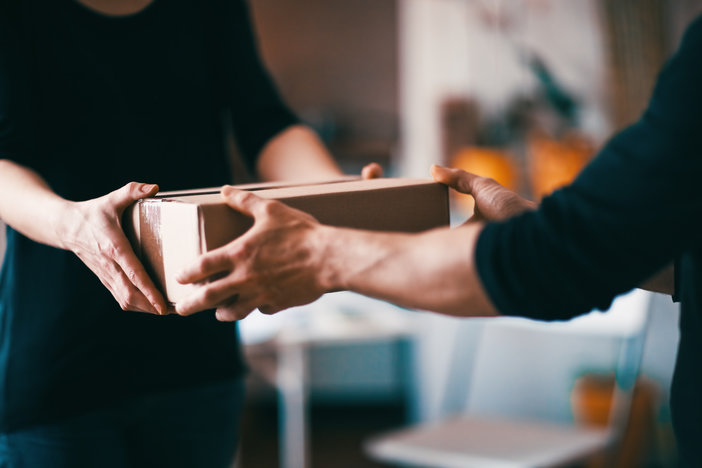Matthew Robertson, Co-CEO, NetDespatch, explores how parcel service delivery has evolved in 2019
Parcel service delivery has evolved significantly in recent years – as online sales continue to soar, the demand for parcel delivery has gone up in parallel. As a result, there are numerous aspects of the delivery service that carriers do exceptionally well, such as providing a specific delivery time-slots and offering the ability to redirect parcels in-flight. Consumers now have options to ask for the parcel to be left in a chosen safe place, or for the parcel to be picked up from a nearby retail store or locker box, and even the option to have the parcel put in the trunk of their car.
Carriers have risen to the challenge of multiple and much more complex delivery options extremely well and provide exceptional services. However, there are times when deliveries go wrong, and when they do, retailers and carriers need to rectify any issues as quickly as possible because, if they don’t, the brand damage can be irreparable. Likewise, retailers are innovating in the way they deliver goods to customers by offering a variety of delivery options with click and collect, collections from other stores, as well as all the options highlighted above.
Consequently, today retailers work very closely with their carriers to ensure that they can provide their customers with fast and efficient delivery. As a result, the age of the near-perfect parcel delivery service has arrived. But with this near perfection also comes the pressure, challenges and costs for retailers and carriers to innovate and keep delivering the high standards that their customers demand and expect.
Today, innovative technologies and business models are helping to reimagine parcel service delivery. Whether it is a startup (such as Uber Eats, Postmates, DoorDash), an internet-based retailer (for example, Amazon), or a supply chain and logistics firm, advancements in carrier services are transforming consumer behavior and disrupting supply chains. For example, a consumer might decide to change their delivery preferences from driving to the store on the way home from work, to having the goods delivered to them – and they can make that change in preference seamlessly.
Likewise, last-mile delivery is also evolving at a rapid rate; with advanced analytics, dynamic route optimization and AI, retailers can now provide greater speed and flexibility for deliveries. Using artificial intelligence (AI) to inform customers when their shipments will arrive is a good example of the way technology has disrupted traditional delivery practices. But, for example, would you let Amazon leave a parcel in your car trunk? Yes, that’s right, Amazon’s latest scheme is to allow parcels to be left in the trunk of a customer’s car and it is running trials of its Key In-Car system in 50 cities across the USA and, if successful, it is expected to come to the UK.
The new technology lets delivery drivers open a car boot using keyless entry, in a similar way to the existing Amazon Key service for homes – in which packages can be left inside front doors and garages in properties with compatible locks. Customers will need to opt for ‘In-car delivery’ when making an order and leave their car in or close to an approved location, usually home or work. Delivery men are provided with a car’s GPS location and license number in order to find it. They can then open the trunk using wireless technology connected to a car’s computer. At present, the service is limited to newer cars by a few makes, including Ford, General Motors and Volvo, enabled with a cell phone app such as FordPass Connect, which owners use to unlock or find their cars.
As far-fetched as this service might have sounded a few years ago, the more convenient the parcel delivery service, the better. In fact, according to a 2018 report by Gladly, 68% of consumers would pay more for a product if a company has great service. As a result, retailers are jumping through an increasing number of hoops as the definition of ‘good customer experience’ continues to evolve. This means that consumers now value choice and control in delivery more than ever before, and retailers must focus on this to stay competitive. For example, next-day delivery is no longer viewed as an innovation – it is a minimum requirement. According to a survey of 2,000 UK adults that all shop frequently online, same-day delivery is the feature that they value the most, and 26% of respondents said that the worst thing about shopping online was the slow delivery times.
And finally, key industry players are taking exciting steps toward the future of delivery. For example, Waitrose recently trialled a two-hour delivery service, ‘Waitrose Rapid Delivery’, in a bid to cater to the consumer trend of frequent and often, ultra-convenient grocery shopping, rather than a routinely scheduled weekly shop.
Other offerings such as enabling shoppers to edit their delivery address and time-slot after the order has been confirmed, right up until it is due to be delivered, are important steps forward. A quarter of failed e-commerce deliveries can be attributed to the inability to change an address after the order is placed, which shows just how important it is to give consumers more power after a sale has been made.
Going one step further, the popularity of IoT devices has led to a recent delivery revolution – unattended in-home delivery. Using IoT-enabled doorbell and front door technology, unattended in-home delivery enables shoppers to grant couriers temporary access into their homes. This can be done from anywhere and only requires consumers to have a tablet or smartphone that is connected to their smart-home network. Ultimately, this could revolutionize deliveries, as shoppers will no longer be restricted to selecting delivery times when they know they will be home.
Today, consumers are increasingly valuing the experience and service they receive from retailers and carriers over purely paying the lowest price – the ability to receive flexible and convenient delivery is certainly a huge attraction for many shoppers. As such, retailers need to be taking steps to implement more and more innovative parcel service deliveries. While IoT-enabled smart deliveries may still be futuristic, offering flexible delivery locations, smaller delivery time slots and selective delivery days is possible – and has already been implemented by number of innovative retailers, enabling them to stand out in an increasingly competitive marketplace.
About the author
 Matthew Robertson is co-CEO at NetDespatch. With a career spanning over 20 years in the general distribution and postal industry, Robertson was instrumental in the adoption and implementation of NetDespatch in the Packets and Parcels division at TNT Post in his three years as group development director. He was also instrumental in the adoption and implementation of NetDespatch in the Packets and Parcels division of the leading alternative B2C postal service. Robertson has also held senior positions at Arla Foods and a leading role in market development for B2C packets within Royal Mail. Robertson is recognized as an industry leader with a strong commercial presence and provides a key link between NetDespatch clients and the business.
Matthew Robertson is co-CEO at NetDespatch. With a career spanning over 20 years in the general distribution and postal industry, Robertson was instrumental in the adoption and implementation of NetDespatch in the Packets and Parcels division at TNT Post in his three years as group development director. He was also instrumental in the adoption and implementation of NetDespatch in the Packets and Parcels division of the leading alternative B2C postal service. Robertson has also held senior positions at Arla Foods and a leading role in market development for B2C packets within Royal Mail. Robertson is recognized as an industry leader with a strong commercial presence and provides a key link between NetDespatch clients and the business.


